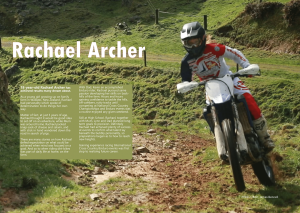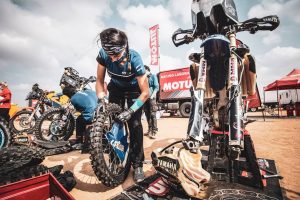Creating Media content for Women in Motorsport has developed over the past 10 years in written and visual form to broaden reach of market audience. Starting from mere couple of sentences on how a female raced against the guys at a National Championship, to spending days/months and years analyzing all aspects on how women have achieved career success across varying disciplines, MXLink creation of Media content reflects how Women are presented to mainstream audience at specific periods of time.

10 years ago, coverage of women in motorsport was not a priority for mainstream Media platforms, where mind-sets, and traditional forms of reporting focused on premier classes dominated by full male line-up of rider’s, and driver’s, along with comments such as: there is no market for covering women racing.
First task was to produce thought provoking content on women whose determination, passion, and courage to compete in male dominated sport challenged assumptions on what females could achieve on track. Strategies focused on covering Women competing in World Championship events which at the time were minor category to the all attention grabbing premier classes.
To achieve desired result, travel and attendance to WMX Rounds opened new doors of opportunity to create content on women producing world-class performances on tracks which were raced by their male peers. Full credit goes to the organizers MXGP/Infront for the initial principle of thought to include Women Motocross World Championship Rounds within same weekend as MX1 and MX2, establishing presence of female rider’s for Media to promote.

Extending Media content of varying platforms remained key to broadening scope and scale of raising profiles of women to mainstream audience. Most certainly, filming women – specifically New Zealand’s Courtney Duncan at WMX Opening Round in Qatar in 2016 – followed by edit and sending visual story to TVNZ network for broadcast on main Sports News the next day opened avenues of marketing Women from track to TV, to audience anywhere in the world.
Analysis of MXLink website statistics provided data of traffic, noting stories which attracted views, along with duration of reader time spent on site, and geographical reach. Further research on how to lock in new and existing followers of Women in Motorsport meant producing work – both written and visual on who these women were when not racing.

For sure, filming a female World Championship rider, driver, or racer off track was very new in 2017 – 2019 prior to COVID. Most Media coverage took place during racing, over the course of a weekend capitalizing on the event’s organization and promotion to targeted audience. Travelling to spend time with Italian WMX 6x Champion Kiara Fontanesi was ground-breaking for producing in-depth content on a world-class athlete whose only public promotion had appeared at race weekends, Press Conferences, and Italian premier functions.
While COVID pandemic re-set the parameter on attending racing for production of content, there were already challenges to face which involved sustainability of resources to continue Media coverage on Women competing on the world stage. Analysis on what content to create, for what desired impact, and for goals of achieving global recognition of Women racing required large amount of time, with few distractions 24/7.
Quality of content completed produced within the confines of home base, supported by advancement of technology in communications was by far the be-all-end-all for sustaining forward momentum on elevating the status of Women in Motorsport to global audience. Instant communication with Women competing in The Dakar Rally, WSBK SSP/SSP300, WSeries, Trails GP, Hard/Extreme Enduro, WMX, GNCC WXC, Extreme E, and pre – post race interviews through resources such as Whats App, messenger, video streams, email and audio conversations provided all that was needed to produce in-depth coverage of females competing around the world.

Such close network of communications enabled further examination on how these women acted as role models to younger generation of females wanting to pursue racing careers. These seasoned women had advanced their racing pathways through tenacity, courage of conviction and strength of character which in turn elevated their respective profiles for gaining financial support and industry endorsement to race from one season to the next.
Yes, the logistical challenges still remained to display action on track with Women competing in Off-Road Rally, 20 minute motos, Hard/Extreme Enduro with competitors venturing up and down steep faces of mountains, along with filming female rider’s racing long loops in America’s GNCC WXC class. Such obstacles of covering women through-out entire race were resolved by opening up new avenues of discussion on what these women had and were achieving.
The shift from creating content based on up-to-date results on women racing at the weekend, to analysis on how women have garnered success in the most financially competitive of sports has developed new dialogues on what Media content can provide mainstream audience. Thought provoking content not only represents harbinger of change, but also elevates Media as a tool to provide inspiration, motivation, and insight on how women set and achieve goals in the most physically and mentally demanding of sports.
Quite a stretch from the original line of content created some 10 years ago, yet pivotal for cementing Women in Motorsport to global market. And, that principle of thought offers more scope and scale to explore in the years to come.
Header photo: Lynn Valk WMX 2023 Image: @phawkmania
Words: Sharon Cox.





Comments are closed.